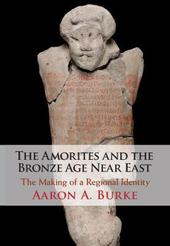
|
The Amorites and the Bronze Age Near East: The Making of a Regional Identity
Hardback
Main Details
| Title |
The Amorites and the Bronze Age Near East: The Making of a Regional Identity
|
| Authors and Contributors |
By (author) Aaron A. Burke
|
| Physical Properties |
| Format:Hardback | | Pages:456 | | Dimensions(mm): Height 259,Width 183 |
|
| Category/Genre | Egyptian archaeology and Egyptology |
|---|
| ISBN/Barcode |
9781108495967
|
| Classifications | Dewey:939.43 |
|---|
| Audience | | Professional & Vocational | |
|---|
| Illustrations |
Worked examples or Exercises
|
|
Publishing Details |
| Publisher |
Cambridge University Press
|
| Imprint |
Cambridge University Press
|
| Publication Date |
17 December 2020 |
| Publication Country |
United Kingdom
|
Description
In this book, Aaron A. Burke explores the evolution of Amorite identity in the Near East from ca. 2500-1500 BC. He sets the emergence of a collective identity for the Amorites, one of the most famous groups in Ancient Near Eastern history, against the backdrop of both Akkadian imperial intervention and declining environmental conditions during this period. Tracing the migration of Amorite refugees from agropastoral communities into nearby regions, he shows how mercenarism in both Mesopotamia and Egypt played a central role in the acquisition of economic and political power between 2100 and 1900 BC. Burke also examines how the establishment of Amorite kingdoms throughout the Near East relied on traditional means of legitimation, and how trade, warfare, and the exchange of personnel contributed to the establishment of an Amorite koine. Offering a fresh approach to identity at different levels of social hierarchy over time and space, this volume contributes to broader questions related to identity for other ancient societies.
Author Biography
Aaron A. Burke is professor of Near Eastern archaeology and the Kershaw Chair in the Archaeology of the Ancient Eastern Mediterranean at the University of California, Los Angeles. He has written on warfare, culture and social change in the Bronze and Iron Ages.
|